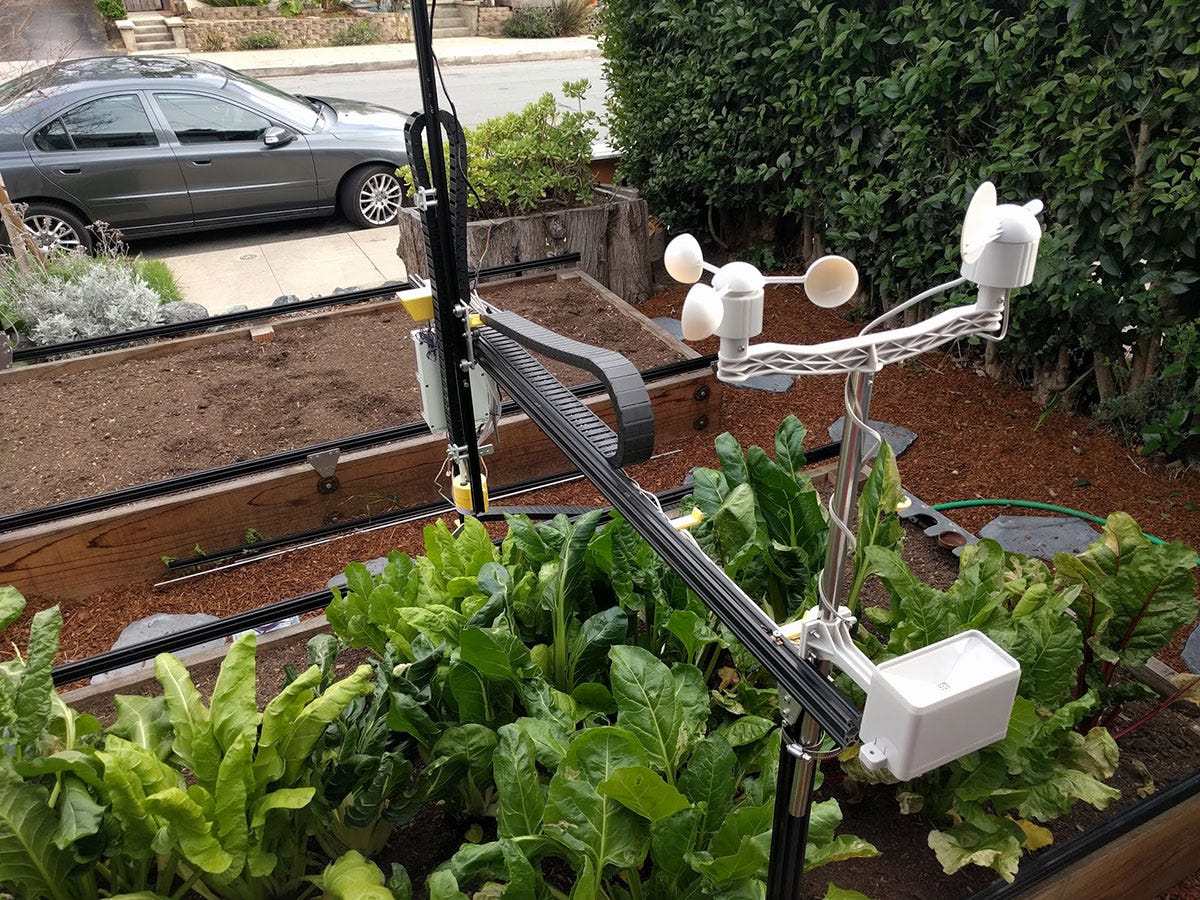Precision Horticulture: How technology is taking gardening to the next level
A look at the tools and techniques that are changing the game for farmers, gardeners and growers
Innovative technology can greatly benefit individuals and communities by increasing efficiency and yields while reducing waste and environmental impact. By using data from sensors, aerial imagery and weather forecasts, growers of all kind can make more informed decisions about planting, fertilizing and harvesting crops. This can lead to higher yields and lower costs and, additionally, help to reduce the use of chemicals and water, which is beneficial for the environment. Precision horticulture is a perfect example on how a savvy selection of technologies and inventions can be used for this purpose.
Precision horticulture is a cutting-edge strategy that leverages the power of data to bring your gardening and farming to the next level. By gathering detailed information about your specific growing site and plants, you can transform raw data into valuable insights that empower you to make smart, data-driven decisions for your crops. With precision horticulture, you'll be able to optimize your yields, reduce costs and achieve better results than ever before. Get ready to take your gardening game to the next level!
Here is a list of inventions and technologies that support the success of precision horticulture:
Sensors: The technologies that support sensor-based monitoring include wireless communication, miniaturization of electronics and low-power consumption.
Drones: technologies such as GPS, imaging, and autonomous navigation.
Robotics: computer vision, machine learning, and control systems.
Variable Rate Technology: VRT relies on GPS, mapping and data management technologies.
IoT & Cloud computing: IoT is enabled by wireless communication, low-power consumption and cloud computing, by distributed computing, virtualization, and data storage technologies.
Artificial Intelligence and Machine Learning: computer processing power, data storage and algorithms.
Precision irrigation systems: sensor-based monitoring, wireless communication and control systems.
LED lighting: possible due to the development of efficient and long-lasting light-emitting diodes.
As you can see, many of those points rely on each other and the advancements in one area can enable new possibilities in others. This combination is key to achieve the best results.
The goal of precision agriculture is to increase crop yields while reducing costs and environmental impact. This is done by using the data collected to make more informed decisions about planting, fertilization, irrigation and other aspects of crop management.
The main technological aspects that can be integrated to the labors of individuals or groups are:
GPS mapping and field management: using GPS technology to map fields, track crop growth, and plan planting, fertilization, and irrigation.
Sensors: previously mentioned, using sensors to gather data on soil conditions, weather, and other factors that can affect crop growth.
Data analysis: using data collected to make more informed decisions about crop management.
Automation: using automated systems for planting, fertilization, irrigation, and other aspects of crop management.
Remote monitoring: using cameras, drones, and other technologies to monitor crop growth and health from a distance.
Greenhouse control systems: automatically adjusting temperature, lighting, and humidity to optimize growth conditions.
It's worth noting that precision horticulture is tailored for specific crops, so it may not be appropriate for some specific plants or flowers as they are very delicate and fragile. The costs of some of these technologies can be high and it may not be feasible for some individuals to invest into them. However, you don’t need to accomplish every single point and, for those who have the resources, thinking in the whole spectrum can be a great way to sustainable increase accurate results.
Currently, some of the specific things not mentioned before that can be done with precision horticulture technology for delicate gardening activities such as cultivating flowers and plants, include:
Automated smart irrigation and fertilization systems that can be adjusted based on real-time sensor data and can be controlled with a phone or computer
Precision planting to plant flower seeds at the optimal time and in the optimal location.
Variable rate applications to apply fertilizers, pesticides and other inputs in the optimal amounts at the optimal time.
While precision horticulture and its colleague precision agriculture are typically associated with large-scale commercial farming operations, it is possible for individuals to use some of the same principles and technologies in their own home gardens or small-scale farming operations. There are many different tools and technologies available that can be used to help individuals optimize their gardening or farming efforts, such as:
Soil moisture sensors to help monitor soil moisture levels
Weather stations to track weather conditions and help plan watering and fertilization
Garden planning and tracking apps that can help individuals keep track of what they've planted, when they've watered, and when they've fertilized.
We are entering a paradigm shift in the way we grow crops, leveraging the power of technology to optimize yield, reduce costs and, most importantly, improve sustainability. As the industry continues to evolve, precision horticulture will play a vital role in meeting the increasing global demand for food and addressing the challenges of climate change.
See you next time,
Eduardo









